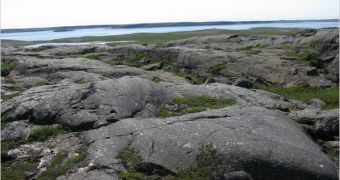Canadian researchers have uncovered what may be the oldest chunk of Earth's crust, but the sparks lit by some techniques used in order to date the rocks may cast doubt over the whole finding.
For the past four years, Jonathan O'Neill and his colleagues from the McGill University in Canada have been observing a wide portion of an ancient stone layer north of Quebec, called the Nuvvuagittuq greenstone belt. Their method of rock dating (based on the quantity of isotope neodymium-142 found in the rock) is still surrounded by controversy, though.
Neodymium-142 is found in all the rocks in various amounts, depending on their age, but the ones dating from before 4.2 billion years ago should be richer in this respect. This happens as a result of the radioactive decay of the samarium-146, a phenomenon that widely disappeared during that respective period, so the rocks that had formed prior to that would hold larger than normal amounts of neodymium-142. As O'Neil explains, "You can precisely measure the amount of neodymium-142 and calculate a precise age for the rock. In our case it gave us an age of 4.28 billion years," which is far older than any other rock previously found. The next oldest (Acasta gneiss) was also found in North Canada and ages 4.03 billion years. Still, there are some chemical elements like the small zircon crystals that are older than that – 4.36 billion years.
These rocks are almost as old as the planet (more than 4.5 billion years) and may bring evidence in order to answer the most problematic geological question: how did the surface of the planet shapeshift from a magma ocean of the Hadean (Earth's first age of life) to the modern floating tectonic plates? The dating process states they're "just" 300 million years (which is not that much in geological terms of such scale) younger than the solar system. It also places them around the same time the Mars-sized body collided with the Earth, 4.53 billion years back, event whose aftermath caused the debris that eventually formed the moon while transforming our planet's surface layers into an ocean of magma. After this event, there's a huge gap in our records of Earth's history. The next "entry" dates from 3.8 billion years ago, when the specialists believe the tectonic plates were already laid in place.
Still, as O'Neil himself admits, the neodymium-142-level technique they used may be measuring the age of the magma it's comprised of instead of that of the rock itself. The conventional method they alternatively used estimated the rock's age to be of only 3.8 billion years. Hopefully, further studies may cast some more light on the matter, although measuring such ages with high precision still is hard to believe.

 14 DAY TRIAL //
14 DAY TRIAL //